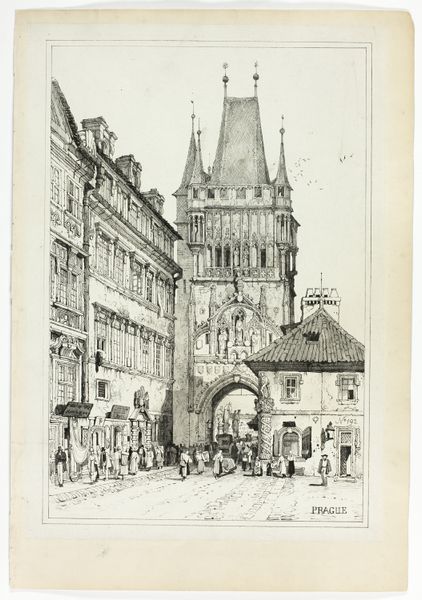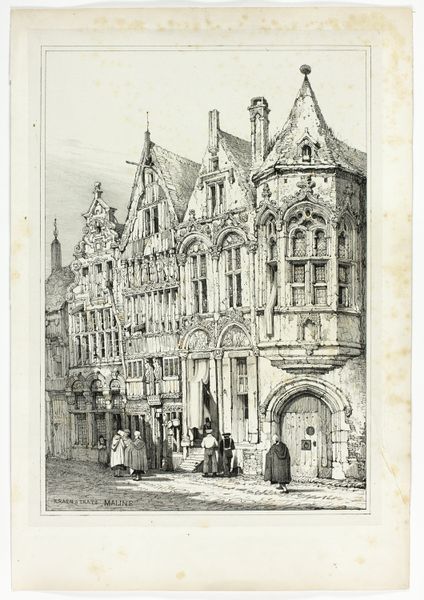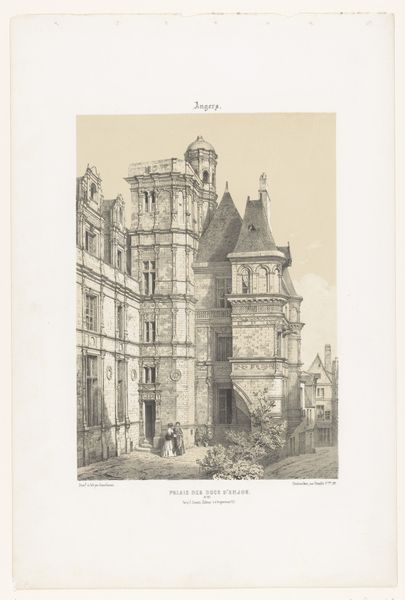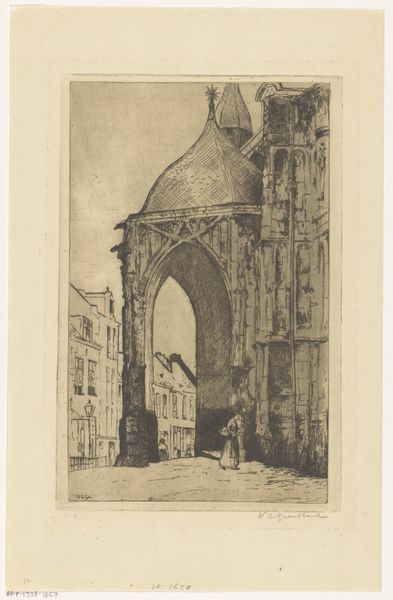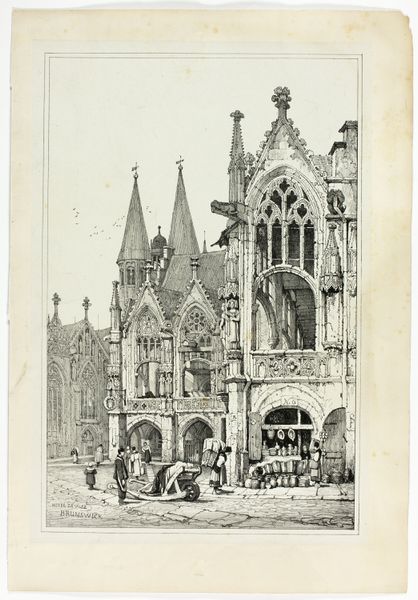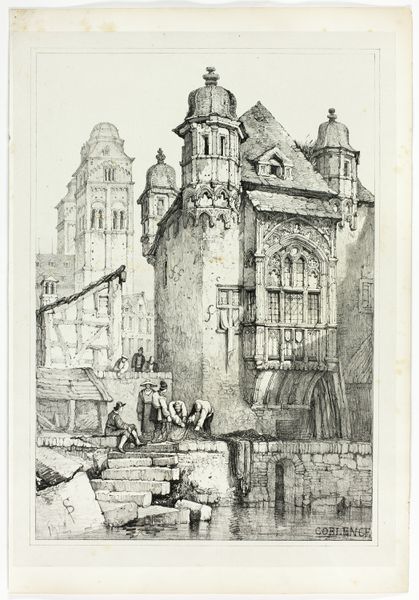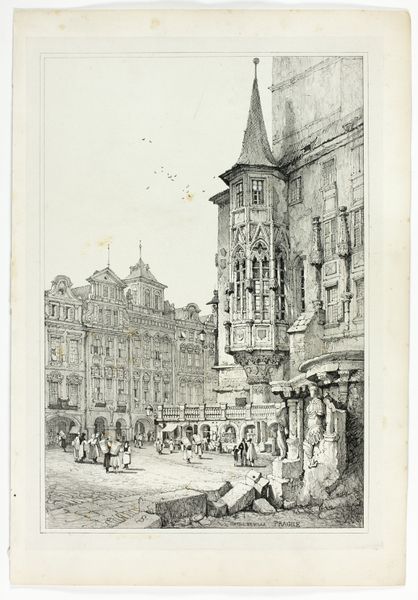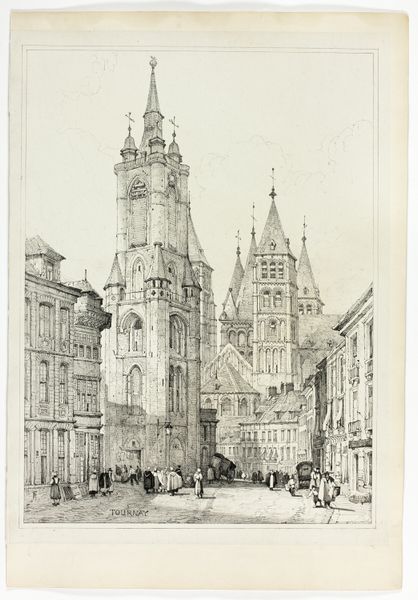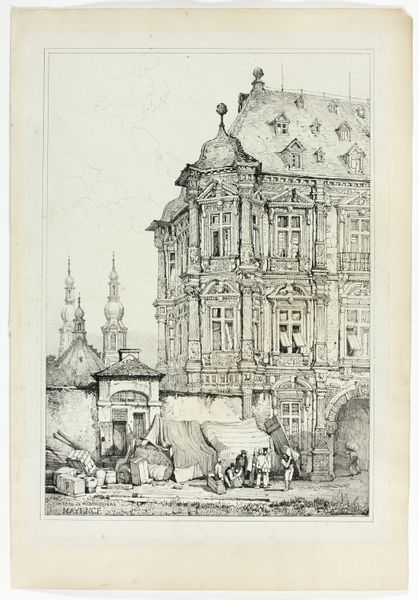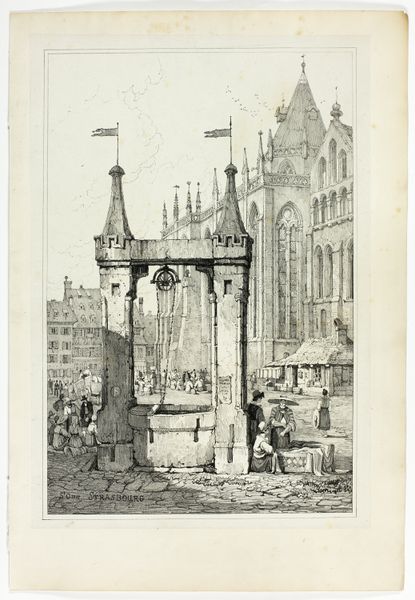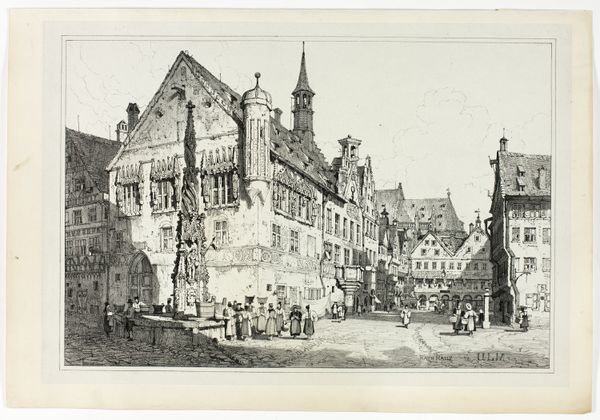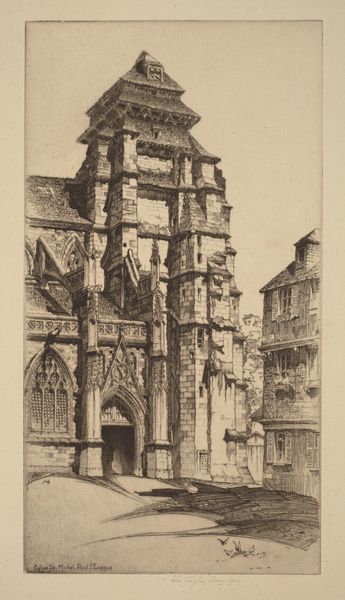
Dimensions: 290 × 425 mm (image); 310 × 445 mm (primary support); 345 × 500 mm (secondary support)
Copyright: Public Domain
Samuel Prout made this drawing of Nuremberg using graphite and possibly pen and ink in the first half of the 19th century. The artist's hand is evident in the detailed linework, which captures the architecture of Nuremberg. The linear, precise rendering, achieved through drawing, highlights the skill of the artist but also reflects the changing modes of visual representation in the industrial era. Prout's work belongs to a tradition of topographical drawing, which became popular with the rise of tourism and the print market. Such images offered a picturesque view of European cities to a growing middle class. The choice of media, being reproducible, ties into wider social issues of labor, politics, and consumption, and the work involved in the production process. The drawing embodies the intersection of art, commerce, and cultural exchange in 19th-century Europe. It challenges the traditional distinctions between fine art and craft.
Comments
No comments
Be the first to comment and join the conversation on the ultimate creative platform.
